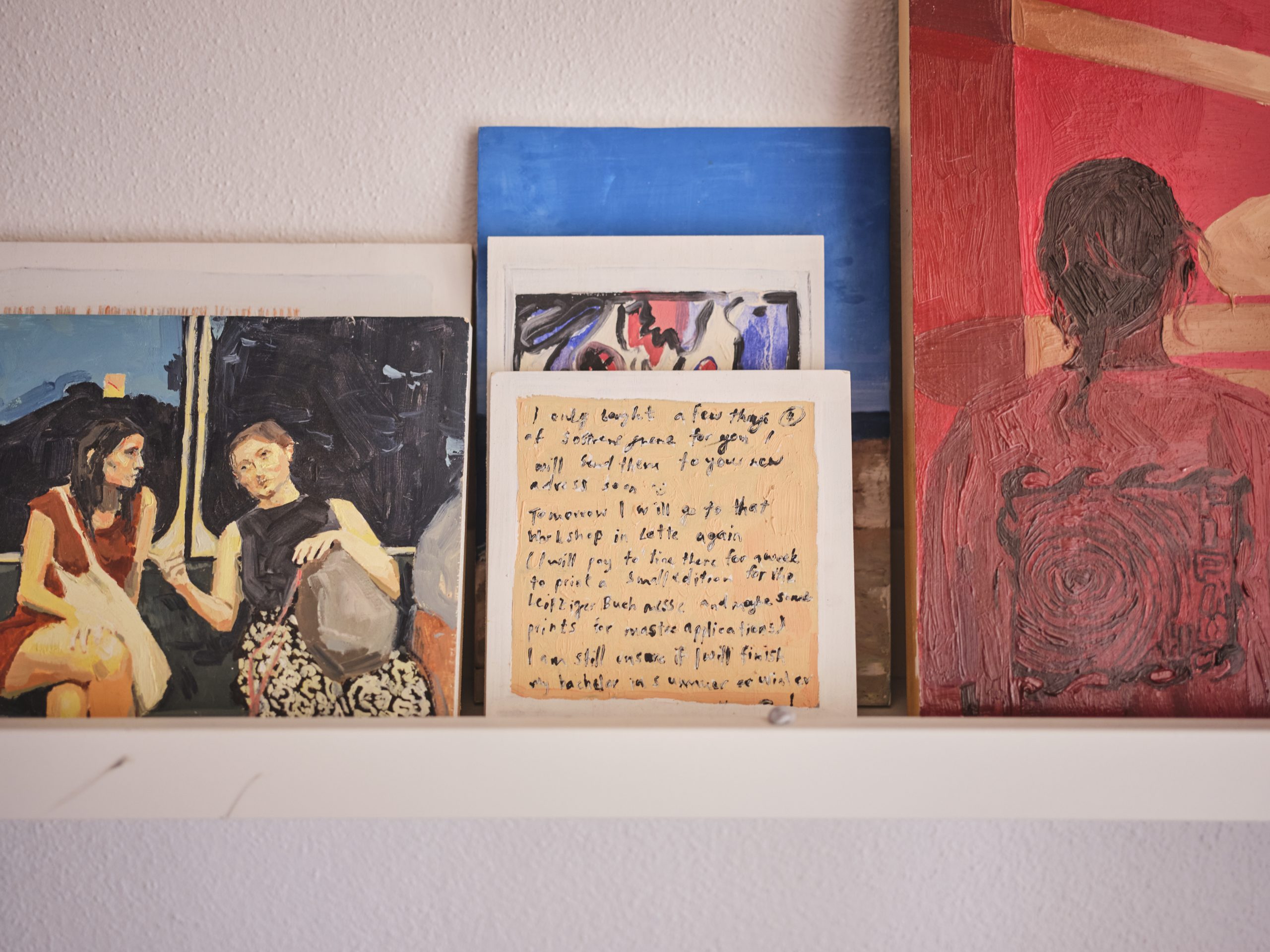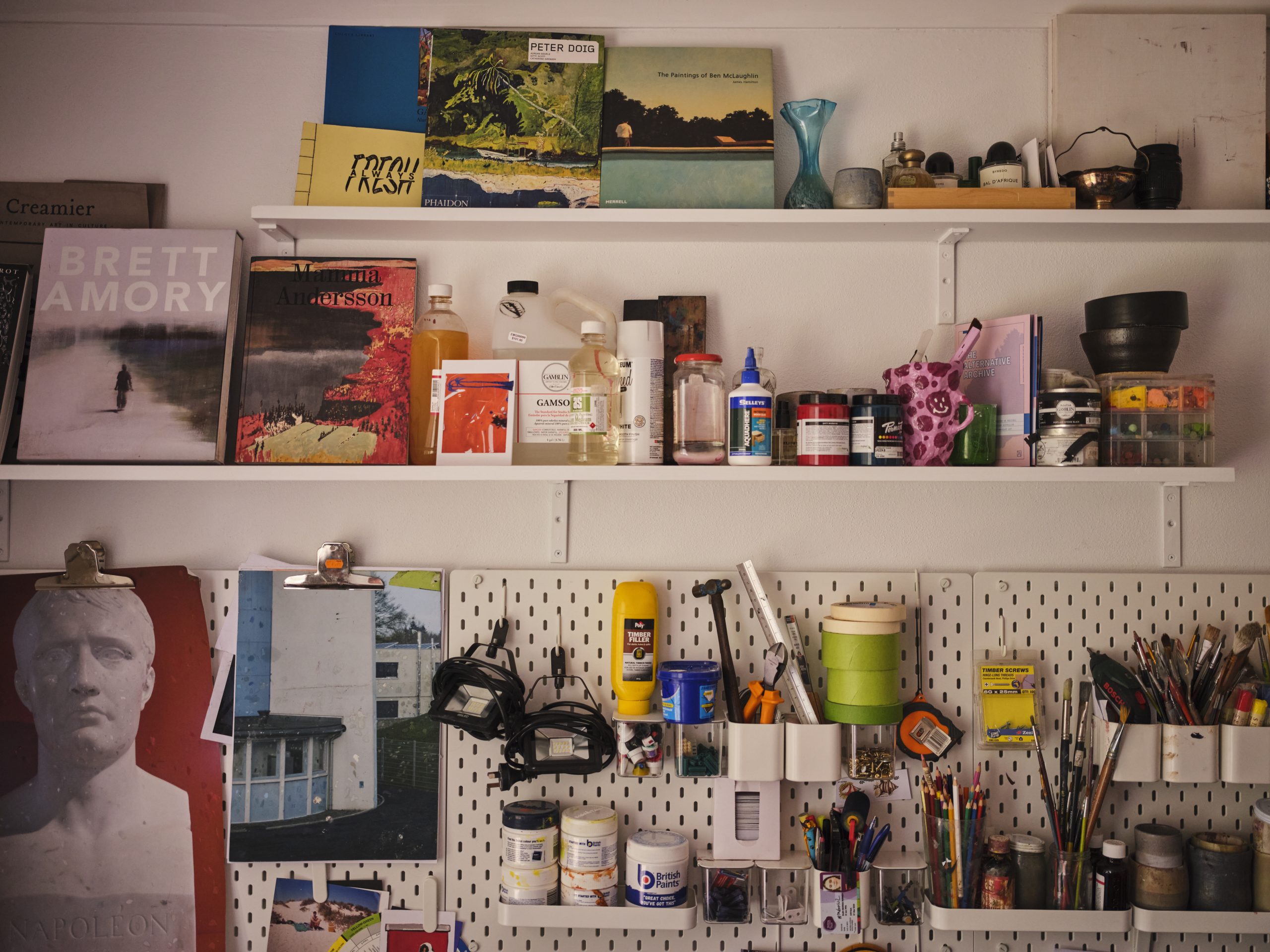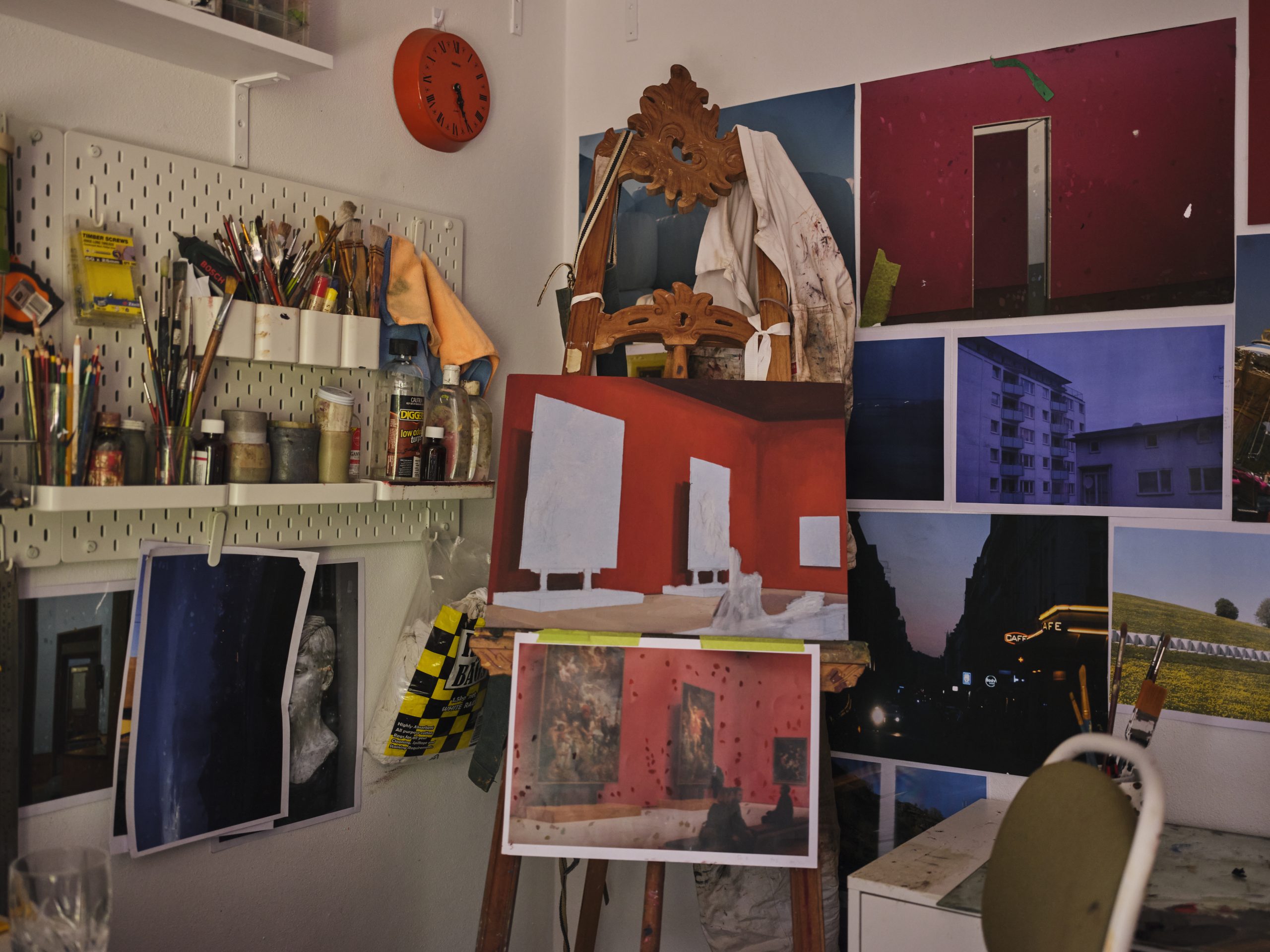Ellen Norrish has always seen herself as a painter first and foremost. We recently caught up with the Perth-based artist at her home studio where she shared with us her fascination with the art form.
“It’s a universally loved medium. It’s the original photography” she says. Through painting she explores the role that photography plays in picturing and collecting the moments that make up contemporary life, and the ensuing pleasure and problem of excessive image accumulation.
Ellen Norrish in her home studio, 2022. Photography by Duncan Wright
Ellen studied Fine Arts at Curtin and since graduating has continued to practice and exhibit work in Western Australia. During her Honours year she began to explore the idea of excessive image accumulation through works like 71/5,735, a series of paintings that referenced photos taken with her iPhone. In thick oil paint, 71/5,735 presents the viewer with a slew of subjects, times and places; a screenshot of ‘Googled’ gardening rakes, snapshots of friends and consumed meals, a photo of David Hockney’s A Bigger Splash, and domestic scenes featuring cats and kitchen appliances. Ellen is interested in how “The library that you’re creating for yourself on our phone with images becomes less purposeful and more incidental, like taking a photo of the jam at the shops or something”.
While 71/5,735 engaged with the smartphone as a photographic tool, her most recent work considers the heyday of the digital camera, particularly in regards to travel. Travel has always been a big part of her identity so when it stopped due to the COVID-19 pandemic she took “lots of nostalgic trips through old photos”. This became a kind of weekend ritual for Ellen. Revisiting a vast archive on her many SD cards, she says “I think I was just spun out that this period, which was so formative for me as a 17 year old, is like 12 years ago now”.
Ellen began to reflect on the transition from digital cameras and SD cards, to a reliance on phones and endless storage expansion for our ballooning collections of pixels. “It was a kind of fondness over what was cutting edge technology at the time” she says. This process kindled the inspiration for the Memory Card series (on view at Stala Contemporary at the time of our meeting). Attached to Ellen’s studio wall are prints of some of the photographs in the series; museum visits, nightscapes, and architecture in far-away cities. Ellen was more selective with the images for Memory Card as she wanted to spend greater time refining each painting.
This approach did not come without challenge for Ellen, explaining “In Honours I did a lot of small paintings, and it was a great way of starting and finishing a painting each day and feeling excited, feeling like you have a bit of control over your time and getting excited about choosing something new to paint”. Referring to the painting on the easel behind her she says “There’s nothing worse than a half-baked painting. This one has been sitting here for ages. If I lose flow, or get interrupted and go do something else, coming back to it gets harder. But I do feel like I have to remind myself that I’m painting a photo and no one knows what the photo looks like. If I’m really stressing over a colour or something, I’m like, who cares?”.
Within the series are multiple pieces – such as Of Daniel Buren’s Echoes, Works in situ 2011 and The Rubens Room – that reference other artists’ work. Ellen says “I love painting other people’s work” having also previously painted temporal and site-specific works by German artist Michael Beutler and WA artist Kyle Hughes-Odgers. Here, painting becomes an alternative documentary tool to the digital camera or regular ‘install shot’, one that is idiosyncratic to Ellen’s experience of a specific time and place. The information around the artwork – a museum patron, a wall text label, a skirting board, the lighting and shadows, the corner where two walls meet, a plinth, an exit sign – in effect becomes heightened.
71/5,735 and Memory Card echo a growing reliance on photographic devices to act as memory keepers and time recorders, from the significant to the most trivial moments in life. As Ellen reinforces “It’s unmanageable nowadays. It’s a full-time job to manage your own photos. You need to hire an archivist”.
Alongside her practice Ellen has maintained a career in community arts. She spent several years working at Geraldton Regional Art Gallery and shares with us her fondness for living regionally. “It was a really fun period. I miss the ease of social life in Geraldton. You never had to plan anything because no one had anything on. Just catch up. Saturday and Sunday morning, it’s the same café.” During this time, Ellen painted from the spare bedroom in her little rental house where she made the work for her first solo exhibition Letters From Ro, and The Tin Heads of Waggrakine series that continues to tour in The Alternative Archive exhibition.
Now living in Perth, finding studio time around other work commitments can be a challenge for Ellen. She shares “If I’m working towards a show, I am in the studio probably three nights of the week and one day of the weekend. It is hard to get in here. But once I’m in, about maybe 40 minutes in, then I could be in here for hours. It’s just getting in the door that’s the hardest part”. She says “I’d move to any country town, I reckon. Close to the beach. There’s definitely more time for painting”.
With overseas travel a possibility once again, Ellen has plans to visit her friend Rosanna in Europe in 2023 to collaborate on another painting series together. With Memory Card in its final days, Ellen shared with us, “It’s definitely a natural cycle after working really hard on a creative pursuit, going from extreme productions, and then having downtime afterwards, to reflect on it”, and that a sense of creative accomplishment has come from developing this refined body of work.
You can see Ellen Norrish’s work in The Alternative Archive exhibition, touring WA until 2024.




